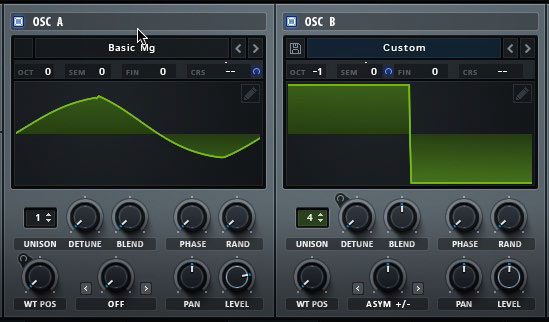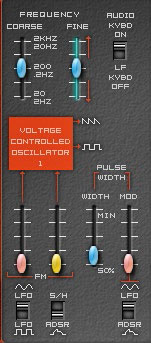29 SYNTH TIPS!
Here’s a selection of tips for every part of the synthesis process to lift your synth sounds to completely new heights…
OSCILLATORS
DETUNING EQUILIBRIUM
Detuning two or more oscillators in the same octave range is a great way to fatten up a sound. Here’s the correct way to do it. Detune each oscillator by equal amounts in opposite directions, say +/-5 cents. This keeps things from sounding too sharp or flat in the mix.
ADDING LOWS WITHOUT USING EQ
If you want to add some body or low end to a patch, add a sine (or triangle) wave oscillator. Tune the sine wave to the same octave or one octave lower than your main oscillator and adjust the volume of the sine wave to taste. This technique can be much more precise than EQ would be, and uses less CPU.
TWO-FINGER JAZZ CHORDS
Tune two sawtooth oscillators so that they’re seven semitones (or a fifth) apart, then lower the cutoff frequency of the low-pass filter to taste. Now play simple two- or three-note chords. If your synth supports it, use sampled piano waves instead of sawtooth.
ADDING NOISE
A classic techno trick is to add a bit of white noise to your sound. Then, as you play, open up the cutoff frequency, increase the amplifier envelope release, and/or raise the noise volume. This is a time-honoured way to help add energy to a lead.

Synths like Serum feature next-level oscillators but can still be used on a basic level
THE ELECTRO FOURTH
Countless electro tracks rely on the following tuning interval: set one oscillator to the fundamental, then tune the second oscillator up by an octave plus four semitones (an octave and a major third, in musical terms). From there, play with the cutoff frequency and filter envelope parameters.
8-BIT NOSTALGIA
Most vintage video games relied on square waves for their retro soundtracks. Start with a single oscillator set to square, then add a second square-wave oscillator set either one or two octaves higher (or lower). For some bonus points, add a bitcrusher effect if you have one handy.
THE SMOOTHEST PAD
Here’s a simple trick for creating really warm pads that take up minimal space in a mix. Detune two sine waves by equal amounts in opposite directions, then adjust the amp envelope to taste. Make sure the filter is off (or all the way open) to ensure proper response across the keyboard.
SUPERSAW
One of the most popular (and some might add to that, overused) sounds is the classic fat trance lead. Here’s how you can do it. Take two or more sawtooths and detune them radically, say +/-10 cents in either direction. Open up the filter all the way, then add a really fat chorus preset.
BEWARE THE DETUNED BASS!
When building punchy bass patches, be careful detuning your oscillators as this can often cause the lows to phase in and out, creating an inconsistent response. For some truly fat bottom, try a super-low octave range, then blend a second oscillator one octave higher. This will ensure that the phase remains consistent.
AUTOMATED SYNC SWEEPS
It’s quite a common practice to use hard sync to create metallic sweeps via applying an LFO or envelope to the pitch of the synced oscillator. Instead, try using the mod wheel to change the pitch of the slaved oscillator. This will give you much more control over the sound - and will also allow automated sweeps in your DAW.
PULSE WIDTH MODULATION EFFECTS
Many synths allow pulse width to be modulated by envelopes instead of - or in conjunction with - the LFO. This is a great way to create unusual sweeps or cool plucked sounds. If your synth allows changing the pulse width via the mod wheel, try giving that a go too.
FILTERS

Modulate your pulse width by envelopes to get good sweeps or plucked sounds
THE CLASSIC FILTER MORPH
Take a sound that uses sawtooth or square waves. Give the filter envelope a fast attack, quick decay, no sustain and medium release. Lower the cutoff down to zero and increase the filter envelope amount up to 50% or more. As your sequence plays, raising the cutoff will morph the sound from plucked to big and bright.
WAH-WAH EFFECTS
Classic guitar wah-wah pedals rely on a band-pass filter for their distinctive sound. If your synth supports it, activate this mode, set the cutoff to 30-50% and add just a touch of resonance. Now apply some free-running triangle-wave LFO to the cutoff frequency and play staccato riffs and chords.
FAUX PHASERS
Another classic effect that can easily be emulated via multimode filters is phase shifting. To achieve this, set the oscillators to sawtooth waves, switch the filter to notch (or band-reject) mode, set the cutoff to 50% and apply a very slow triangle-Synths wave LFO to the filter cutoff frequency. Adjust some resonance to taste.